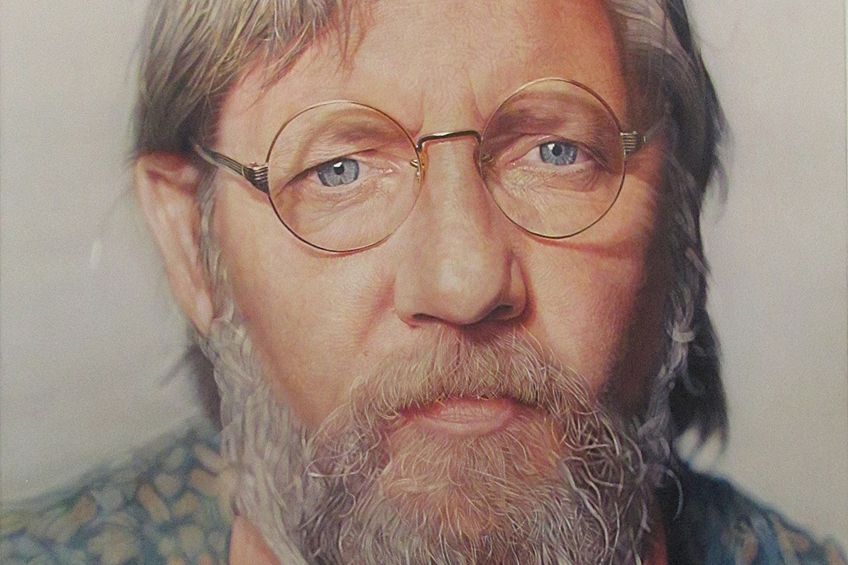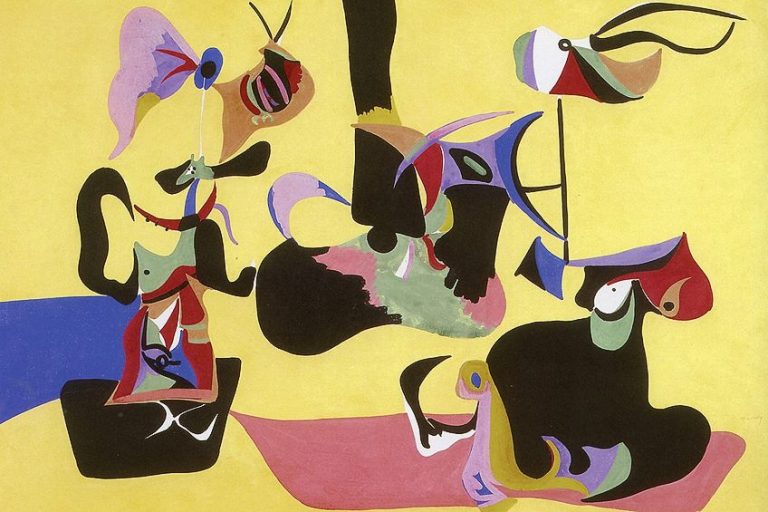Chuck Close – A Master of Modern Realism in Portraiture
Chuck Close was a pioneering American artist renowned for his large-scale, photorealistic portraits. Born in 1940, Close’s work is distinguished by his meticulous technique and innovative approach to portraiture, often transforming photographs into highly detailed paintings. Despite a spinal artery collapse in 1988 that left him partially paralyzed, Close continued to create art, adapting his methods to work with limited mobility. His portraits, which feature friends, family, and fellow artists, are celebrated for their intricate detail and unique grid-based process, cementing his legacy as a master of contemporary art and a testament to resilience and creativity.
Key Takeaways
- Chuck Close was a groundbreaking photorealist artist known for his detailed portraits.
- He overcame paralysis and continued to create significant works using grid and pixel techniques.
- Close left an enduring legacy in the art world, influencing many contemporary artists.
Early Life and Education
| Birth | July 5, 1940 |
|---|---|
| Death | August 19, 2021 |
| Place of Birth | Monroe, Washington, United States |
| Genre of Work | Photorealism and portrait painting |
Born on July 5, 1940, Chuck Close emerged as a prominent American artist renowned for his photorealist portraits. These larger-than-life paintings often featured friends, family members, and fellow artists, demonstrating his skill in capturing intricate details. His work has had a lasting impact on the art world, reshaping how people perceive and appreciate photorealist and abstract portraiture.

Close’s early interest in art led him to take lessons as a child, honing his talent and unique approach to painting. Despite facing significant challenges, including a sudden spinal artery occlusion that left him paralyzed in 1988, he adapted his techniques and continued to produce compelling art. His use of grid and pixel-based methods became a hallmark of his style, reflecting his artistic evolution and resilience. Throughout his career, he collaborated with various photographers and artists, pushing the boundaries of traditional portraiture. Close’s legacy endures not just through his iconic works but also through his innovative approaches to art-making, inspiring countless artists today.
Beginnings in Monroe, Washington
Chuck Close was born on July 5, 1940, in Monroe, Washington. He grew up as an only child. His father, Leslie Durward Close, tragically passed away when Chuck was just 11 years old. His mother, Mildred Wagner Close, supported his developing interest in art.
Struggling with a neuromuscular condition and nephritis, Chuck found solace in creative activities.
Academic Pursuits and Struggles
Chuck faced significant obstacles in his academic journey. He struggled with dyslexia, making traditional learning difficult. This led him to focus on art, where he excelled. Art became a tool for expression and learning, helping him navigate his school years despite frequent absences due to illness.

University of Washington School of Art
After high school, Chuck Close enrolled at the University of Washington School of Art. He graduated in 1962 with a Bachelor of Fine Arts degree. During his time there, he honed his skills and began to develop his unique artistic style.
His time at the university was crucial in shaping his future career.
Yale University School of Art and Architecture
Close continued his education at the Yale University School of Art and Architecture. At Yale, he earned a Master’s degree in Fine Arts in 1964. The rigorous program and exposure to influential artists and movements further expanded his artistic techniques and vision. Close thrived in this stimulating environment, contributing significantly to his growth as an artist.

Fulbright Scholarship and Vienna
In 1964, Chuck Close received a Fulbright Scholarship, allowing him to study in Vienna, Austria. This prestigious award provided an opportunity to immerse himself in European art and culture.
His time in Vienna enriched his perspectives and influenced his later works, adding depth and complexity to his already-developing photorealistic style.
Artistic Evolution and Style
Chuck Close is widely known for his transformations in the realm of portrait painting. His journey includes shifts between Photorealism and abstraction, all while employing unique techniques and materials.

The Emergence of Photorealism
Chuck Close rose to prominence in the late 1960s and early 1970s with his contributions to Photorealism. This movement emphasized creating paintings that looked as realistic as photographs. Close is especially known for his photorealist portraits, which brought a new level of detail and realism to the canvas. Using photographs as references, Close focused on meticulous details, capturing every wrinkle and pore.
His works often span large canvases, making the viewer feel as if they are looking at an enormous, lifelike photo rather than a painting.
Innovative Techniques and Materials
Close was innovative not just in his approach, but also in his use of materials and techniques. After a spinal artery collapse in 1988 left him paralyzed, he adapted his methods. He began painting with a brush strapped to his wrist, demonstrating remarkable resilience and creativity. He often used acrylic paint and played with textures through various tools, including his signature use of a razor blade to achieve minute details. His adaptability was vital in maintaining his status as a leading figure in contemporary art.
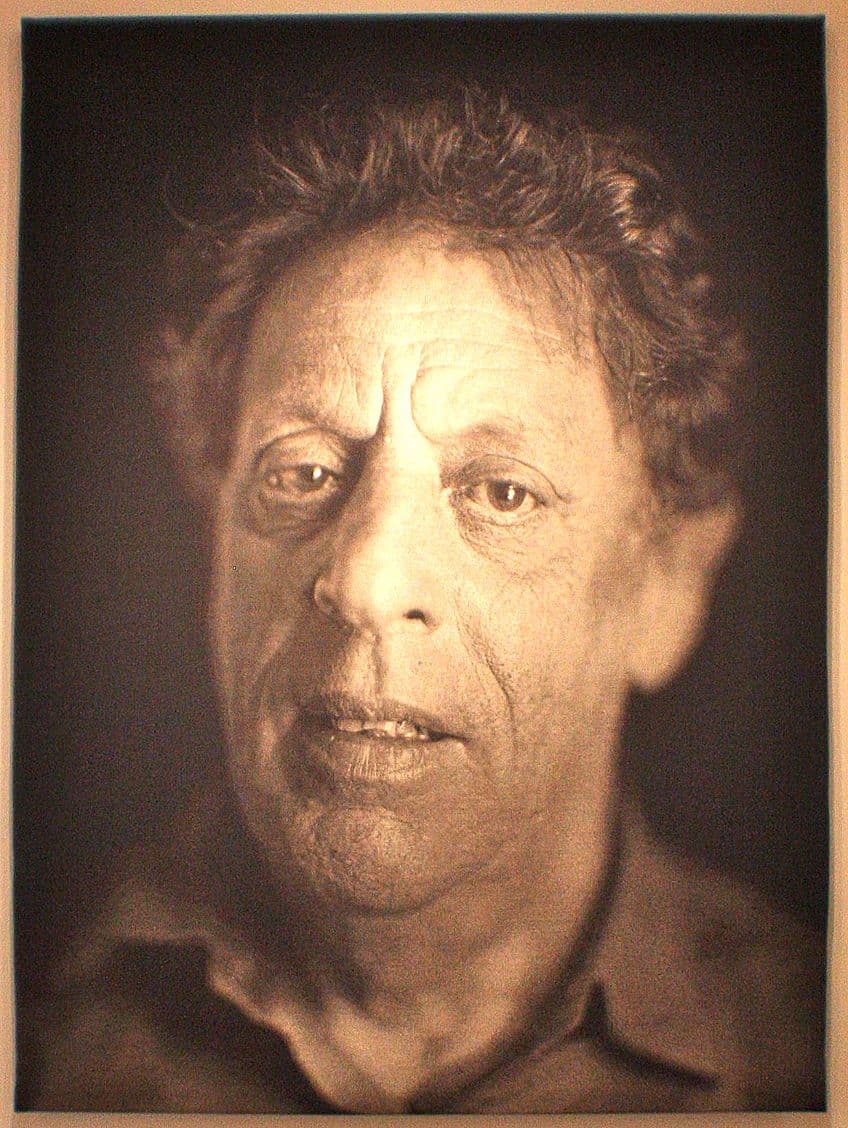
The Signature Grid Method
The grid method became a hallmarked technique for Close. This approach involved dividing a photograph into a grid and then reproducing each section on a larger scale. This method allowed him to maintain proportional accuracy and detail. Each square in the grid is treated almost like an individual abstract painting, but when viewed from a distance, they come together to form a coherent, highly detailed portrait.
This technique underscores his meticulous nature and innovative genius.
Abstract Expressionism to Photo-Realist Portraits
Before his foray into Photorealism, Close explored Abstract Expressionism. In the early phases of his career, he experimented with more fluid and dynamic forms of painting. However, he shifted towards super-realism with his photo-realist portraits, setting a new standard for detail and accuracy. Despite the shift, elements of his abstract background remained. The minute, individual components of his grid squares often echo abstract art principles, blending both worlds seamlessly. This evolution showcases his versatility and profound impact on modern portrait painting.

Major Works and Collaborations
Chuck Close created a range of notable pieces and worked with various artists throughout his career. His most famous works include large-scale portraits, and he often collaborated with others, such as contemporary composer Philip Glass. One of Chuck Close’s most famous works is the Big Self-Portrait (1967 – 1968), a massive black-and-white painting of his own face. This piece marked the start of his exploration into photorealism. Another iconic work is Phil (1983), a portrait of his friend and composer Philip Glass. His technique involved using a grid system to create highly detailed and realistic images.
Close’s method of painting required intense focus and patience. His subjects ranged from himself to family members, friends, and notable figures in the art world. His works are celebrated for their meticulous detail and scale.
Collaboration With Philip Glass
Chuck Close and Philip Glass shared a deep friendship and collaborated multiple times. Close’s portrait of Glass, Phil, is one of his significant pieces, highlighting the intersection of visual art and music. Glass, an influential composer, was featured in several of Close’s works. These portraits not only captured physical likeness but also hinted at the intellectual and creative bond between the artist and the composer. Their collaboration extended beyond portraits, influencing each other’s work and contributing to a broader cultural dialogue across different art forms.
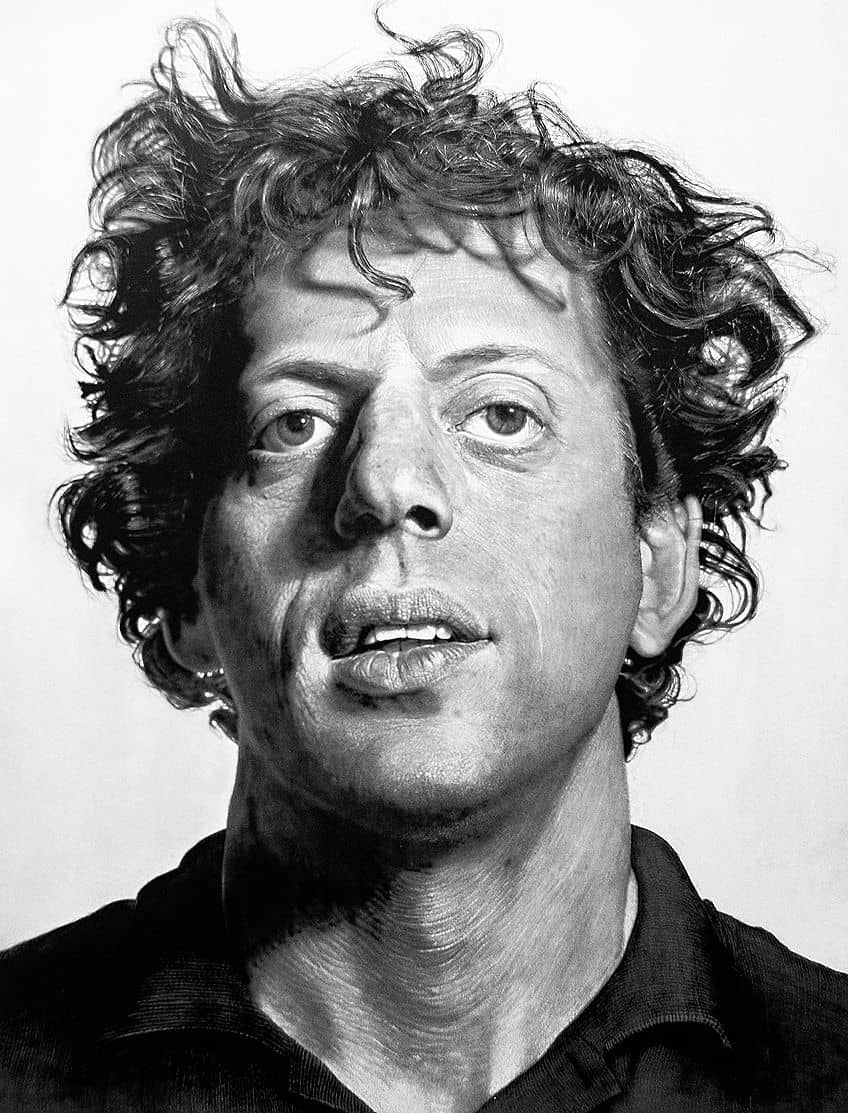
Exhibitions and Museums
Close’s work has been exhibited in many prestigious museums worldwide. The National Gallery of Art and the Museum of Modern Art (MoMA) are notable institutions that have showcased his pieces. His large-scale portraits have captivated audiences and gained critical acclaim. Major exhibitions of his work often draw large crowds, fascinated by his unique technique and compelling subjects. Close’s art can be found in permanent collections of major art institutions.
His legacy is preserved in these museums, allowing new generations to appreciate his contributions to contemporary art.
Later Life and Legacy
In his later years, Chuck Close faced significant personal challenges and controversies but continued to leave an enduring impact on the art world. Chuck’s legacy remains complex, marked by both his achievements and his personal struggles.
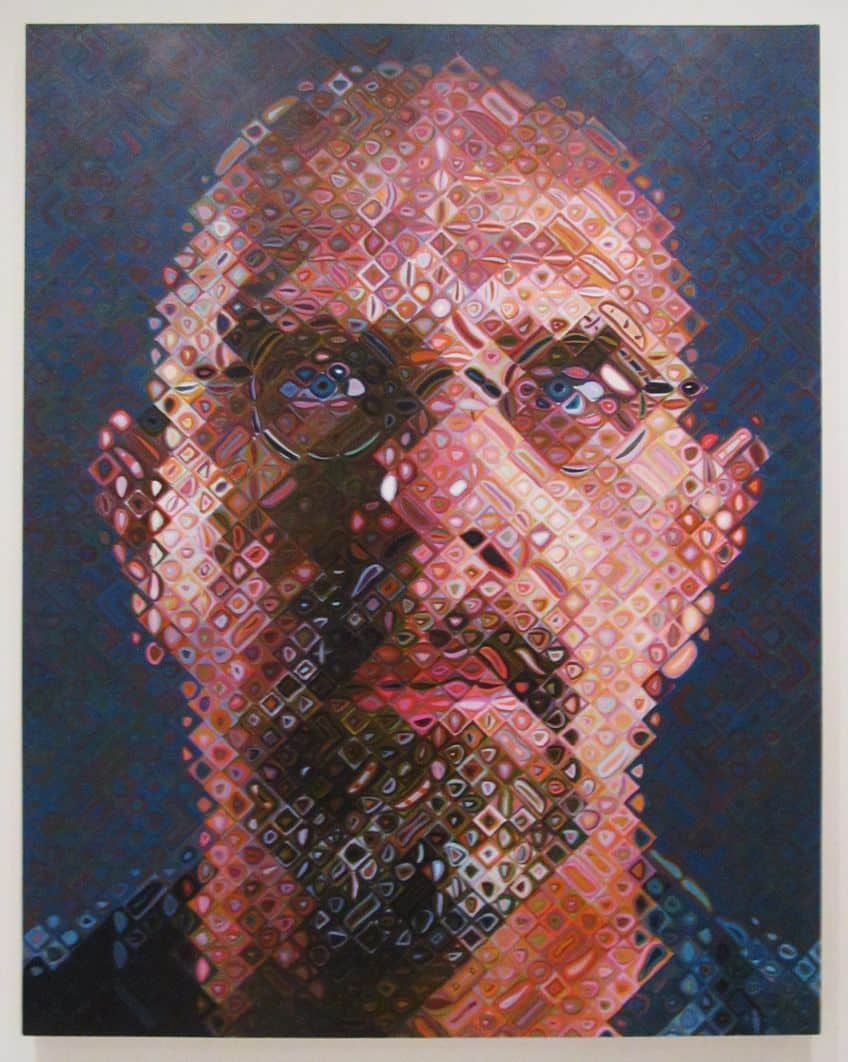
Overcoming Personal Challenges
Chuck Close experienced a life-altering event in 1988 when he was paralyzed from the neck down due to an occlusion of the anterior spinal artery. Despite this, Close adapted his techniques to continue his work. He used a wheelchair and developed new methods to create his massive, detailed portraits.
His perseverance inspired many, proving his dedication to his craft even in the face of adversity.
Influence and Contributions to the Art World
Close’s innovative techniques in photorealism and portraiture have left a lasting mark on contemporary art. He is best known for his large-scale, highly detailed portraits created using a grid method. These works required meticulous attention to detail and a deep understanding of human features. Close’s unique approach helped bridge the gap between abstract art and realistic representation, influencing countless artists who came after him.

Controversies and Legal Battles
Close’s later years were also marked by serious allegations of sexual harassment and misconduct. These claims emerged in 2017, with several women coming forward to share their experiences with him. The accusations led to public outrage and affected his reputation significantly.
Some institutions distanced themselves from his works, and his standing in the art community suffered as a result.
Legacy of Chuck Close
Despite the controversies, Close’s contributions to art remain significant. He passed away on August 19, 2021, in Oceanside, New York, due to congestive heart failure. His works continue to be studied and admired for their technical brilliance and emotional depth. Close’s life serves as a testament to the complexities of human experience, balancing extraordinary artistic achievements with profound personal challenges.

Chuck Close’s contributions to contemporary art extend beyond his technical prowess and innovative techniques; they embody a narrative of resilience and adaptability. Despite facing significant physical challenges, Close’s unwavering dedication to his craft and his ability to reinvent his artistic process serve as an inspiration. His portraits, characterized by their striking realism and unique grid compositions, continue to captivate and influence the art world. Through his remarkable journey, Close not only redefined portraiture but also demonstrated the transformative power of art in overcoming personal adversity, leaving an indelible mark on the history of modern art.
Frequently Asked Questions
What Is Known About Chuck Close’s Art Technique?
Chuck Close was a master of photorealism and abstract portraiture. He often created large portraits using a grid system, breaking down images into small, detailed sections. This approach allowed him to capture intricate details and textures. He also used a variety of tools, including a very large format camera, to achieve his unique style.
How Did Chuck Close Contribute to the Art World?
Chuck Close revitalized portraiture as a significant art form during a time when it was out of fashion. His massive-scale portraits, often based on photographs, brought a new dimension to realistic and abstract art. Close’s works have been featured in major museums and galleries, highlighting his impact on contemporary art.
What Educational Background Did Chuck Close Have?
Chuck Close was a Yale graduate and had a strong academic foundation in art. He studied at both the University of Washington and Yale University, where he honed his skills and developed his unique artistic approach. His education played a crucial role in shaping his career as a groundbreaking artist.
Isabella studied at the University of Cape Town in South Africa and graduated with a Bachelor of Arts majoring in English Literature & Language and Psychology. Throughout her undergraduate years, she took Art History as an additional subject and absolutely loved it. Building on from her art history knowledge that began in high school, art has always been a particular area of fascination for her. From learning about artworks previously unknown to her, or sharpening her existing understanding of specific works, the ability to continue learning within this interesting sphere excites her greatly.
Her focal points of interest in art history encompass profiling specific artists and art movements, as it is these areas where she is able to really dig deep into the rich narrative of the art world. Additionally, she particularly enjoys exploring the different artistic styles of the 20th century, as well as the important impact that female artists have had on the development of art history.
Learn more about Isabella Meyer and the Art in Context Team.
Cite this Article
Isabella, Meyer, “Chuck Close – A Master of Modern Realism in Portraiture.” Art in Context. July 18, 2024. URL: https://artincontext.org/chuck-close/
Meyer, I. (2024, 18 July). Chuck Close – A Master of Modern Realism in Portraiture. Art in Context. https://artincontext.org/chuck-close/
Meyer, Isabella. “Chuck Close – A Master of Modern Realism in Portraiture.” Art in Context, July 18, 2024. https://artincontext.org/chuck-close/.


